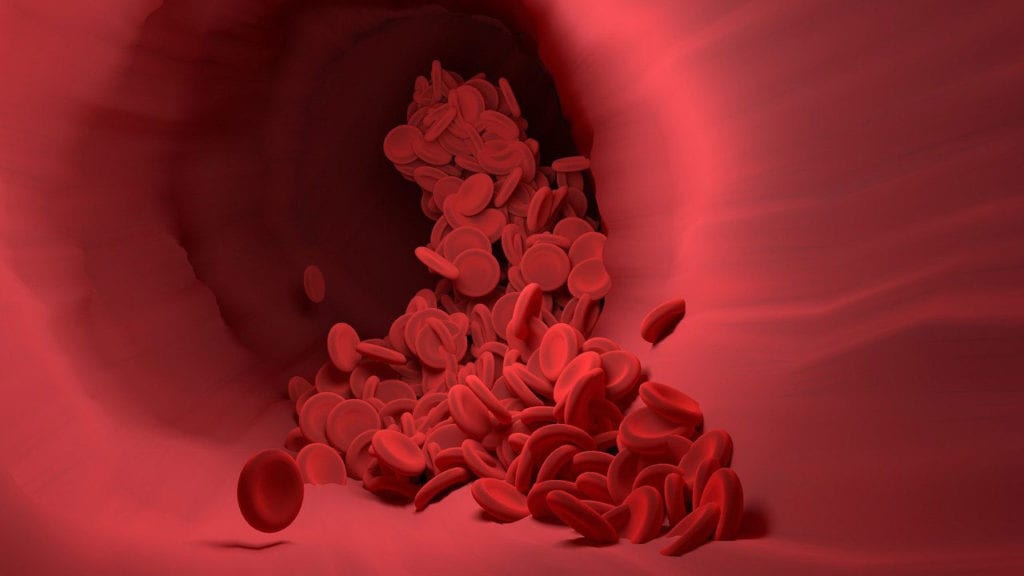Genetic research is a burgeoning and exciting field. With the discovery of new genetic mutations and variants comes a deeper understanding of rare diseases and their subtypes. According to Cancer Network, researchers have done just that for myelodysplastic syndromes. Researchers, who published their findings in Blood, believe that a SF3B1 gene mutation causes a distinct subtype of MDS.
Myelodysplastic Syndromes
Myelodysplastic syndromes (MDS) are a group of conditions which prevent healthy blood cells from leaving bone marrow. Red and white blood cells and platelets all help your body run smoothly. Red blood cells transport oxygen and help eliminate waste. White blood cells play a role in your immune function. Finally, platelets play a role in blood clotting. But for people with MDS, these blood cells either don’t grow properly or they don’t leave the bone marrow.
Myelodysplastic syndromes are progressive, but symptoms, severity, and life expectancy vary. It develops into acute myeloid leukemia in about half of all cases. The five subtypes of myelodysplastic syndromes are refractory anemia, chronic myelomonocytic leukemia, refractory anemia with sideroblasts, refractory anemia with excess blasts, and refractory anemia with excess blasts in transformation
Symptoms depend on what type of blood cell count you’re low on.
Red Blood Cells
A low red blood cell count is called anemia. With this, you might experience fatigue, lowered energy levels, chest pain, pale skin, shortness of breath, and heart palpitations.
White Blood Cells
A low white blood cell count is called neutropenia. With this, you might experience increased lung, sinus, skin, and urinary tract infections.
Platelets
A low platelet count is called thrombocytopenia. With this, you will bruise and bleed more easily because your blood will not clot normally.
Learn more about myelodysplastic syndromes.
SF3B1 Mutation
Researchers are proposing that SF3B1-mutated myelodysplastic syndromes is considered its own distinct classification. About 20% of patients with MDS have the SF3B1 mutation.
After analyzing previous studies and database-sourced patient records, the researchers found a distinct difference between patients with the mutation and those without. Out of 3,479 patients, 22.8% (795) had the SF3B1 mutation.
Using the data, the researchers proposed new diagnostic criteria for SF3B1-mutated myelodysplastic syndromes. These include:
- Cytopenia – a fancy way of saying that your blood cell count is lower than it should be.
- Somatic SF3B1 mutation – in this case, “somatic” means physical, so a mutation that causes some bodily symptoms.
- Morphological dysplasia – the development of abnormal cells (but usually not cancerous cells).
- Bone marrow and peripheral blood blasts – blasts are basically young, immature cells.
However, people with selected concomitant genetic lesions do not fit into this criteria. According to one of the study’s authors:
“This represents an important step forward in [diagnosing] MDS on the basis of genetic features [without blood marrow analysis].”
Treating SF3B1-mutated Myelodysplastic Syndromes with Luspatercept
A Phase III clinical trial found that luspatercept effectively treated many patients with SF3B1-mutated MDS. The therapy is FDA-approved.
The Phase III clinical trial followed 229 patients with MDS. Prior to the study, all patients were being treated with red blood cell transfusions. Of this group:
- 66.8% (153 patients) received subcutaneous luspatercept every 3 weeks.
- 33.2% (76 patients) received a placebo.
The researchers were looking for patients to achieve two potential endpoints:
- Transfusion independence for 8+ weeks during the first 6 months of the trial. 38% (58 patients) of the group taking luspatercept achieved this. Contrastingly, only 13% (10 patients) of those on placebos reached this.
- Transfusion independence for 12+ weeks within the first 6 months or the first year. Of the luspatercept group, 28% (43 patients) achieved this within 6 months, rising to 33% (50 patients) by 1 year. In the placebo group, 8% (6 patients) achieved this within 6 months, with only 12% (9 patients) by 1 year.
Common side effects include diarrhea, nausea, dizziness, fatigue, and muscle weakness.
Read the full study in the New England Journal of Medicine.





